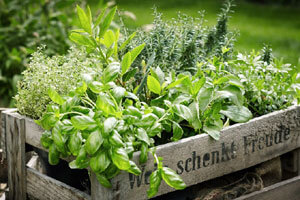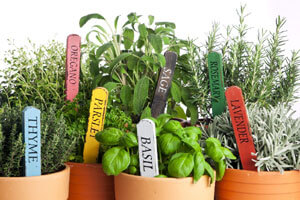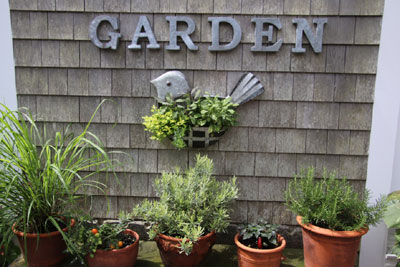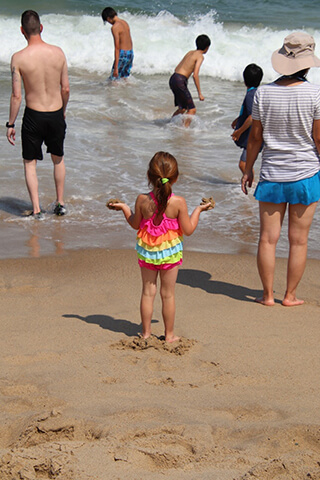Are you looking to try out your green thumb this year? You’re not alone, the last few years have seen an explosion in interest in home gardening! While some folks have enough yard space for a raised bed or larger in-ground garden, many do not have that option.
gardening! While some folks have enough yard space for a raised bed or larger in-ground garden, many do not have that option.
Fear not! You can try container gardening, turning your deck, patio, front step, or window box into a productive, satisfying, and delicious garden!
Imagine stepping onto your porch to pick your own fresh salad for lunch or snacking on a handful of cherry tomatoes or peas you grew! Clip some mint from your step for a mojito or run out to the patio for a handful of herbs to season a meal.
Growing your own food, even if it’s something as small as a few leaves of lettuce or a radish or two is a fun and satisfying activity. Kids (and adults) will delight in watching a seed germinate, unfurling its first green leaves, and with a little care and luck, growing into something you can eat!
 First Step for Container Gardening
First Step for Container Gardening
The first steps to starting your container garden is determining the best location and what you want to grow. For the location you’ll want to be sure to have adequate sunlight. Most leafy plants like lettuce can get by on four hours of direct sunlight, and don’t want to be too hot.
Fruiting plants on the other hand, like tomatoes and peppers, want six or more hours of direct light. A benefit of container gardening is that if you find the spot you’ve chosen isn’t getting enough sun you can always pick up the containers and move them to a sunnier spot!
When selecting your crops, you’ll want to keep in mind how much space you want to devote to your garden, how much sunlight you have, and what you’d like to eat. Crops like lettuce, herbs, tomatoes, peas, and beans, can be harvested over a longer period of time, whereas root crops are a one-and-done harvest. Try some peas, lettuce, and spinach in late spring or early summer when it’s cool, or grow a kitchen herb garden filled with basil, thyme, parsley, sage, mint, chives, and more! Fruiting crops like tomatoes and peppers can also be grown in containers.
Grow a mix of things! Not only is it more fun, but diversification also adds resilience to your little farm, so if one crop falls victim to a pest or disease, you’ll  still have others to enjoy. Don’t be afraid to interplant vegetables and flowers. Some plants like marigolds will deter garden pests, and some plants grow better surrounded by different crops. There are numerous resources on companion planting combinations, from gardening books like “Carrots Love Tomatoes” to countless blogs and online resources.
still have others to enjoy. Don’t be afraid to interplant vegetables and flowers. Some plants like marigolds will deter garden pests, and some plants grow better surrounded by different crops. There are numerous resources on companion planting combinations, from gardening books like “Carrots Love Tomatoes” to countless blogs and online resources.
It’s important to select plants that grow well in containers. While winter squash is delicious, it’s sprawling vines and long time to harvest may not be the best match for a small window box and summer garden! Vine crops can be tough in a contained space as they tend to sprawl, whereas beans and peas are a bit more tolerant.
Many seed companies offer dwarf varieties specifically designed to grow well in containers. Leafy greens are a great option as they grow quickly and can be replanted successively throughout the season for a steady supply of salads!
You’ll want to be sure to have a large enough container with enough soil for your crop, so it has access to enough nutrients and holds enough water. Shirking on the container size could stunt your plants. Not sure if something will grow well in a container? Try it! Part of the fun in gardening is in experimentation.
Easy Care for Container Gardening
Once your garden is growing, you’ll want to keep an eye on the water. The soil in containers will dry out faster than in-ground gardens, especially with the sea breezes on Cape Cod and the Islands. To minimize this, be sure to plant things close together and mulch with grass clippings or other material so that no soil is  exposed. On the other hand, make sure your containers have good drainage, so your plants don’t get too wet in a passing shower.
exposed. On the other hand, make sure your containers have good drainage, so your plants don’t get too wet in a passing shower.
Container gardening has many advantages, one being that you can contain plants that would otherwise spread across your lawn, such as mint, oregano, and chives. Whether you are using traditional plant pots, 5-gallon buckets, window boxes, or a raised bed, it’s very rewarding to have fresh produce just a step away from the kitchen.
Add some edible flowers like nasturtiums for a splash of functional color in your garden and an impressive garnish. Vertical gardening also offers a fun space-saving approach and can be a fun DIY project adding a unique touch to a fence or wall!
For more resources and advice on home gardening in your area look to the Cape Cod Cooperative Extension service and local garden centers. Fellow local gardeners can also be a great resource for area-specific growing advice like when it’s safe to put your tomato seedlings outside, or when to expect a frost in the fall, or even pest identification.









This Post Has One Comment
Pingback: 20 Easy Earth Day Events On Cape Cod